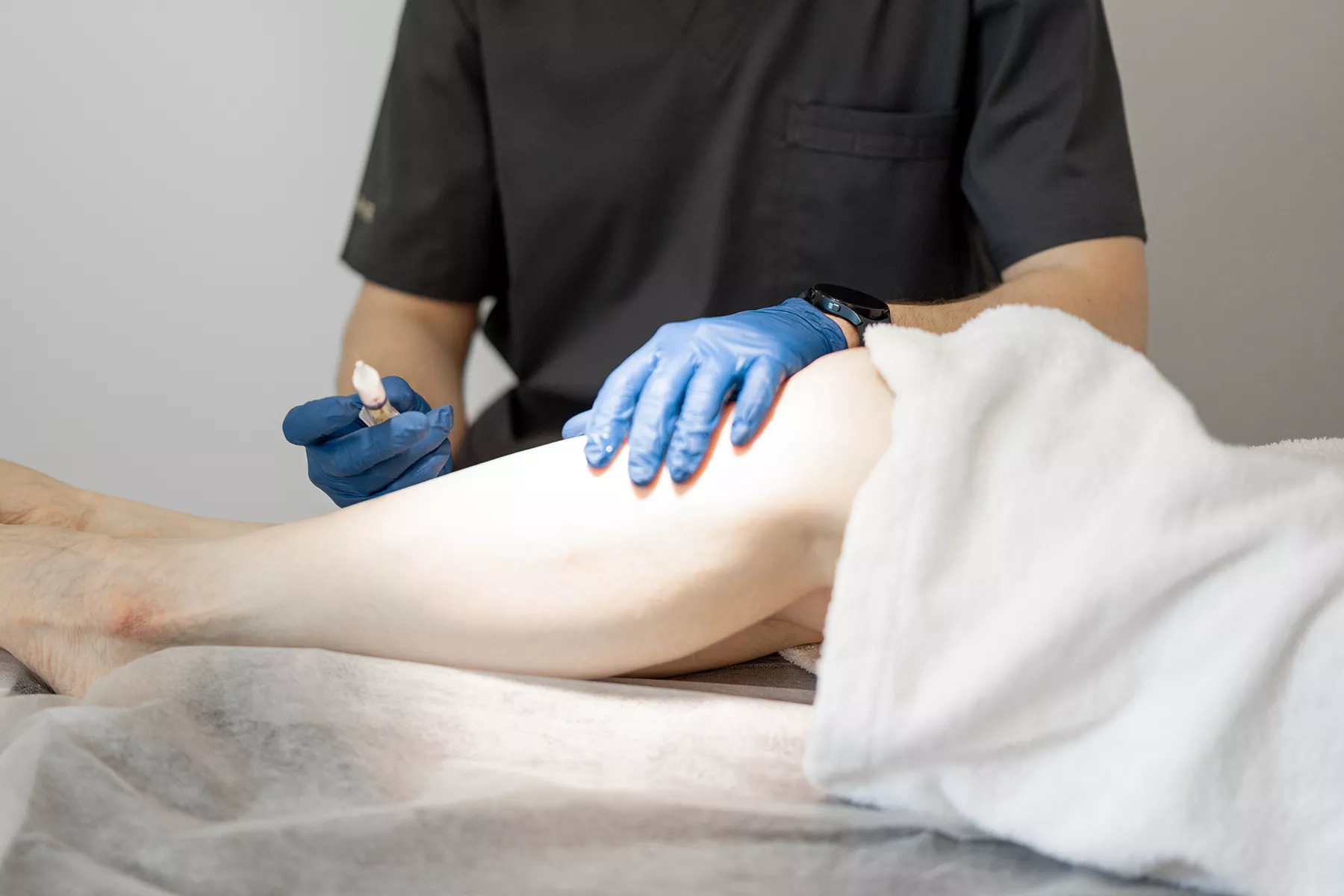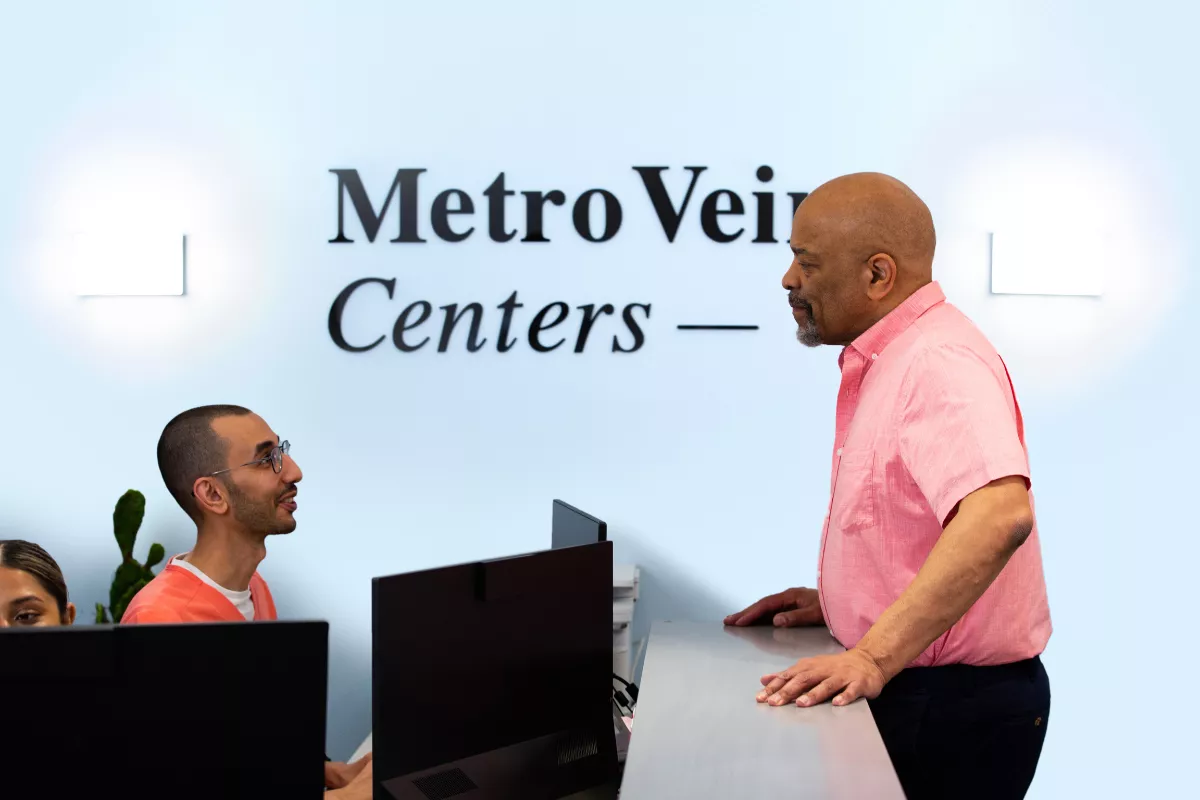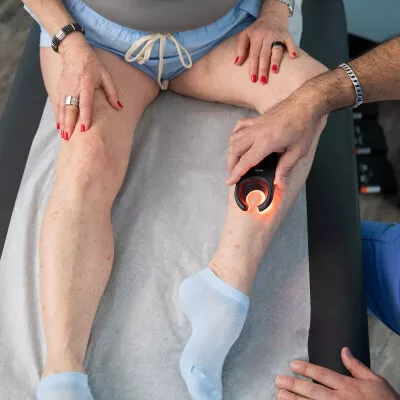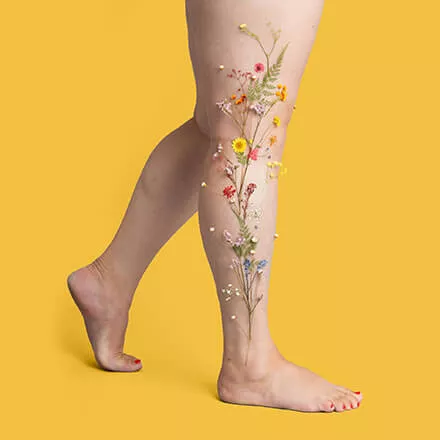Varicose and spider veins have plagued humanity for centuries, causing discomfort and self-consciousness for millions. Enter sclerotherapy, a minimally invasive medical procedure that has revolutionized the treatment of these unsightly and sometimes painful vascular issues.
Whether you're battling bulging varicose veins or fine, web-like spider veins, understanding sclerotherapy could be your first step towards healthier, more confident legs.
In this comprehensive guide, we'll dive deep into the world of sclerotherapy.
What is Sclerotherapy?
Sclerotherapy treats both varicose veins and spider veins using an injected foam. Once dispersed throughout small veins, the solution adheres to the vein walls and eliminates the surfaces, causing the visible veins to quickly close and be reabsorbed into the body.
What Is Sclerotherapy?
Spider vein removal results with the snap of your finger!! Our team of board-certified vein specialists use sclerotherapy, an injection treatment, to treat visible spider veins and bulging varicose veins in 15 minutes or less. Minimally invasive, minimal downtime. Walk into summer with smooth, happy, healthy legs with help from Metro Vein Centers. Visit the link on our channel's homepage or call us at 866-629-9848 to schedule your FREE evaluation at any of our New York, New Jersey, or Michigan vein clinics. Find us on Instagram, Facebook, and Pinterest: links on channel homepage.Used in different cases for both cosmetic reasons and for painful legs, sclerotherapy is the best treatment option and considered the gold standard when it comes to vein treatments in the USA.
Different Types of Sclerotherapy Treatments
Sclerotherapy has evolved to include several variations, each designed to address specific types of veins or patient needs.
Here are the main types of sclerotherapy treatments:
1. Traditional Liquid Sclerotherapy
This is the standard form of sclerotherapy, ideal for treating small to medium-sized spider veins and varicose veins. A liquid sclerosing agent is injected directly into the problematic veins, causing them to collapse and eventually fade.
2. Foam Sclerotherapy
Foam sclerotherapy involves mixing the sclerosing solution with air or gas to create a foam.
This variation is particularly effective for larger varicose veins because:
- The foam displaces blood in the vein, allowing for better contact between the sclerosing agent and the vein wall.
- It can treat a larger area with a smaller amount of solution.
- The foam is visible under ultrasound, allowing for more precise treatment.
3. Ultrasound-Guided Sclerotherapy
This technique combines traditional sclerotherapy with ultrasound imaging. It's used for veins that aren't visible on the skin's surface, such as deeper varicose veins.
The ultrasound allows the physician to:
- Accurately locate the problematic veins.
- Guide the needle to ensure precise injection.
- Monitor the distribution of the sclerosing agent in real-time.
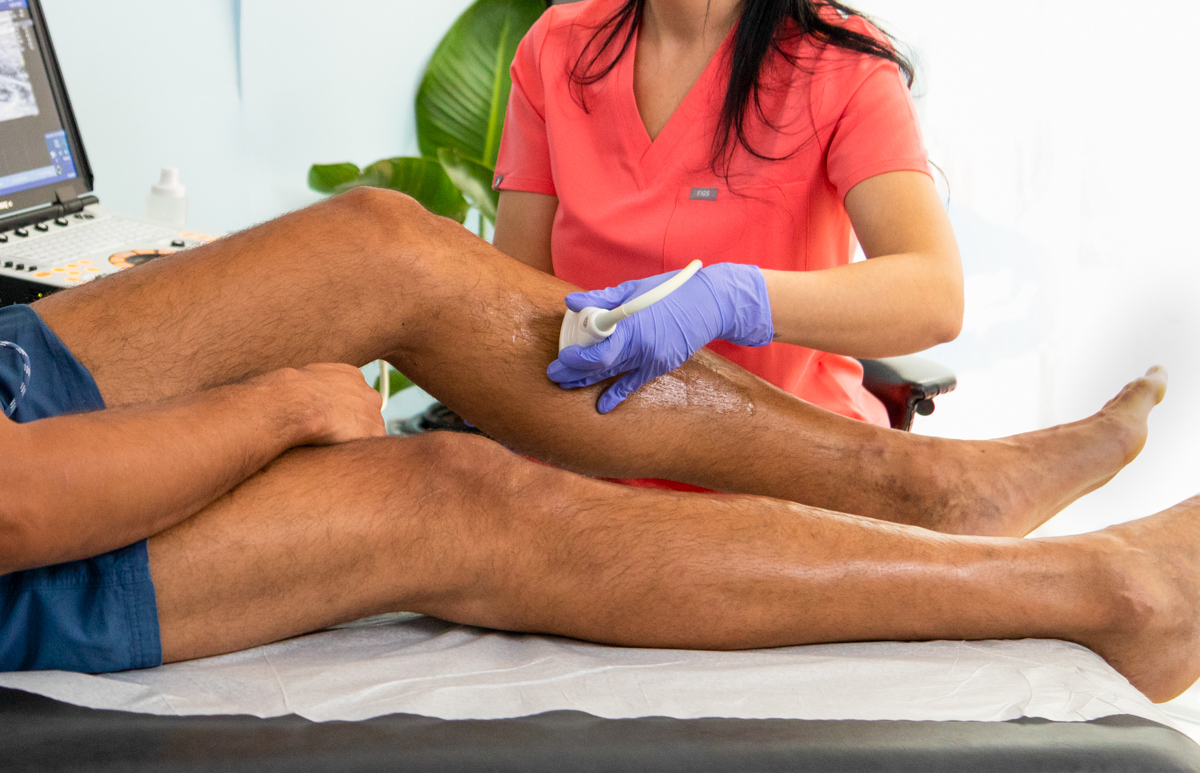
4. Microsclerotherapy
This is a specialized form of sclerotherapy used for very small spider veins and telangiectasias (tiny dilated blood vessels near the surface of the skin). It involves using extremely fine needles and very dilute solutions to treat these delicate veins.
5. Polidocanol Endovenous Microfoam (PEM)
This is a specific type of foam sclerotherapy that uses a proprietary microfoam formulation. It's FDA-approved for treating the great saphenous vein system, which is often responsible for larger varicose veins.
6. Catheter-Directed Sclerotherapy
In this variation, a catheter is inserted into the vein and used to deliver the sclerosing agent. This method allows for more controlled and uniform distribution of the solution, particularly in larger veins.
Each of these variations has its own advantages and is suited to different types of vein issues.
The choice of technique depends on factors such as:
- The size and location of the veins being treated
- The patient's overall vascular health
- The severity of the vein disease
Your vein specialist will assess your individual case and recommend the most appropriate form of sclerotherapy for your needs. Often, a combination of these techniques may be used to achieve the best possible results.
How Does Sclerotherapy Work?
Sclerotherapy works by injecting varicose and spider veins with a concentrated foam. Once injected via a tiny needle, the solution adheres to the vein walls. Essentially, the special foaming agent acts to purposely irritate the underperforming vein.
This causes the visible veins to quickly close and be reabsorbed into the body. The visible, painful veins disappear (often instantaneously) and the blood that was leaking within your damaged veins can instead travel through healthy veins within your legs.
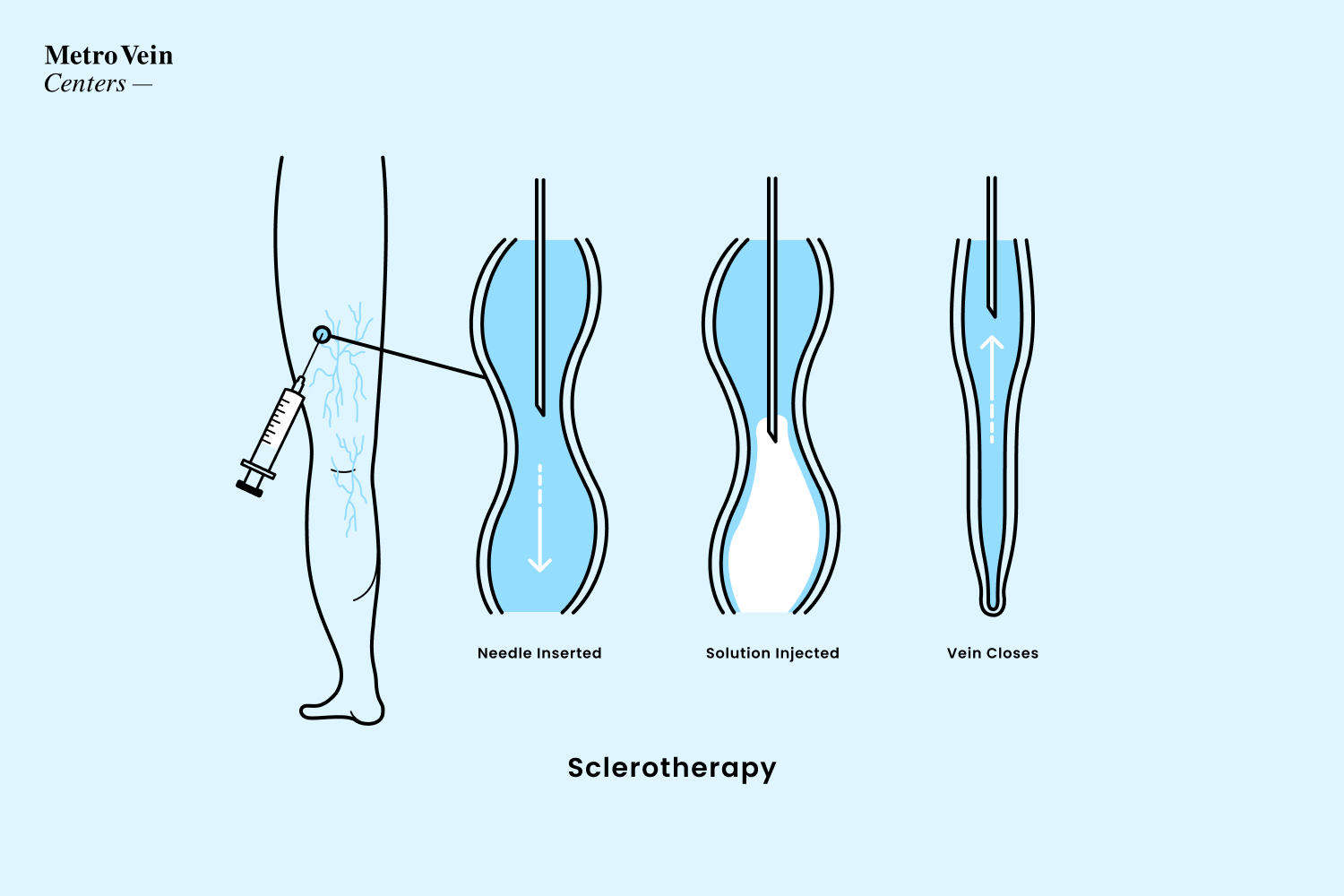
A Closer Look at the Sclerotherapy Procedure
Sclerotherapy is a minimally invasive treatment that involves injecting a solution directly into problematic veins, causing them to collapse and eventually fade away.
Let's break down the procedure step by step:
1. Pre-Treatment Preparation
When you arrive for your sclerotherapy appointment, you may be asked to change into a gown and lie down on an examination table. The treatment area will be cleaned and sterilized to prevent infection.
2. Vein Mapping
Your doctor may use ultrasound imaging to precisely locate the veins that need treatment. This step ensures accuracy and helps plan the injection sites.
3. The Injection Process
Using a very fine needle, your doctor will inject a sclerosing solution directly into the targeted veins. These solutions irritate the lining of the blood vessel, causing it to swell and stick together.
Common sclerosing agents include:
- Sodium tetradecyl sulfate
- Polidocanol
- Hypertonic saline solution
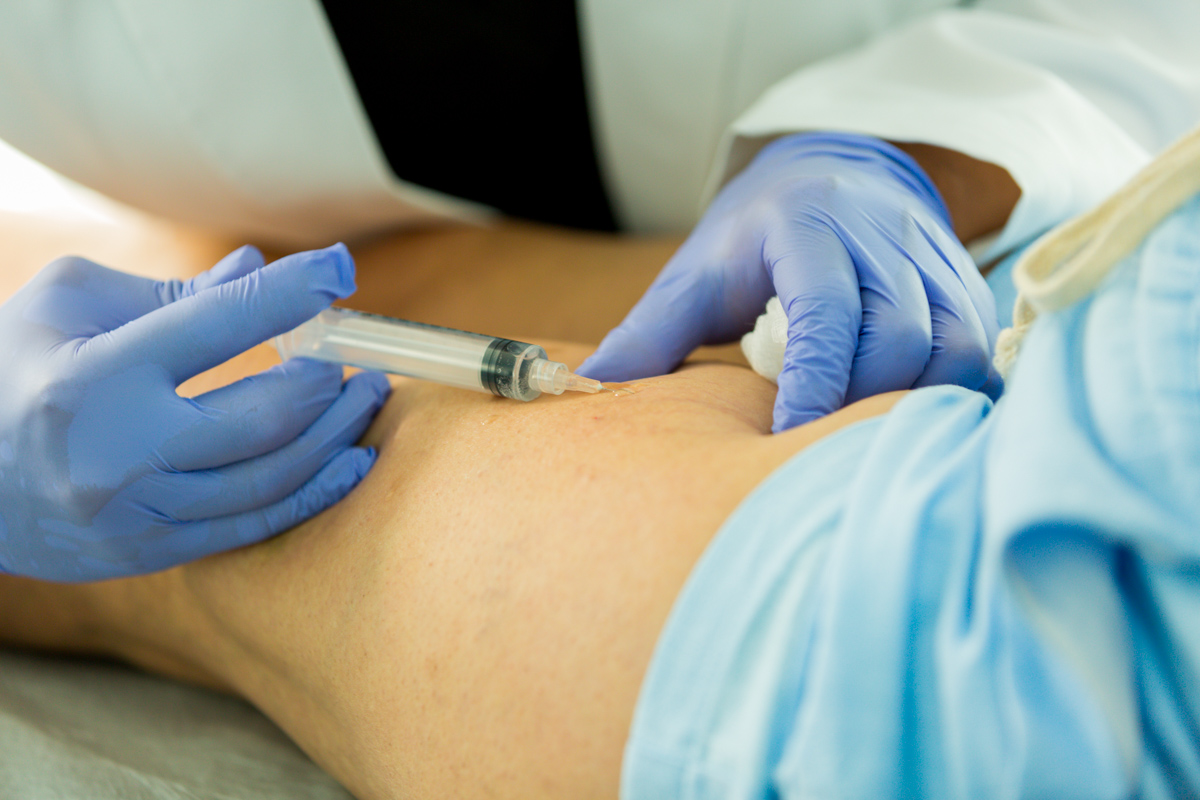
4. Number of Injections
Depending on the extent of your vein issues, you may receive multiple injections during a single session. Typically, one injection is administered for every inch of vein being treated.
5. Massage and Compression
Immediately after the injections, your doctor may massage the treated areas to help distribute the solution and prevent blood from re-entering the vein. Compression pads or bandages may be applied to the injection sites.
6. Post-Procedure Care
After the procedure, you'll be asked to wear compression stockings and walk around for a short period. This helps promote blood flow and prevents blood clots.
7. Leaving the Clinic
Sclerotherapy is an outpatient procedure, so you'll be able to leave the clinic immediately after treatment. Most patients can drive themselves home and return to normal activities the same day.
The procedure's minimally invasive nature, combined with its proven efficacy, makes it a popular choice for those seeking to address unsightly or uncomfortable varicose and spider veins.
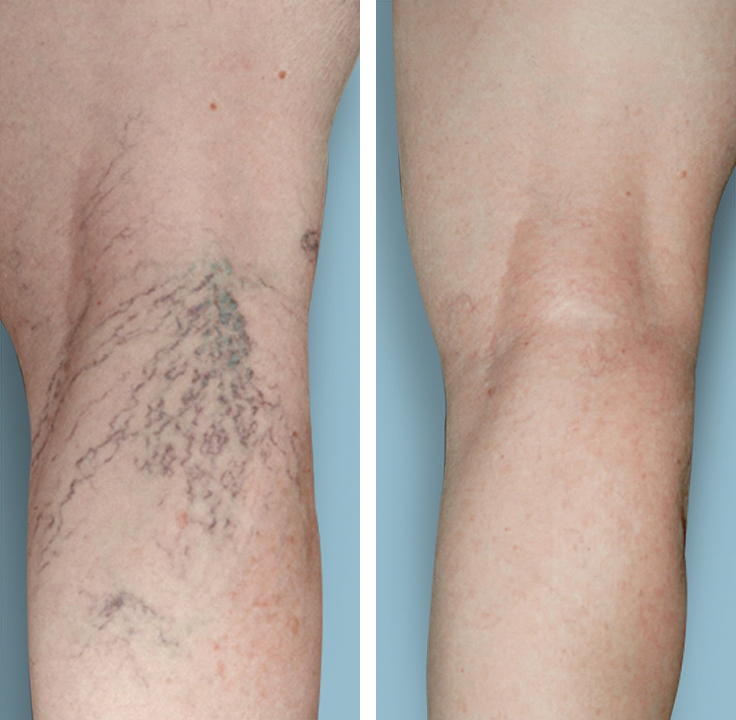
Ideal Candidates for Sclerotherapy Treatment
Sclerotherapy treatment can be effective for many individuals with varicose and spider veins, but it's not suitable for everyone.
Here are the characteristics of ideal candidates for sclerotherapy:
- Age Range: Generally, adults between 30 and 60 years old are considered good candidates for sclerotherapy. However, the treatment can be effective for patients in their 20s or older than 60, depending on their specific condition and overall health.
- Vein Size and Type: Sclerotherapy works best for smaller spider veins and small-to-medium varicose veins. For larger, more bulging veins, ultrasound-guided sclerotherapy may be recommended.
- Overall Health: Candidates should be in relatively good health. Those with a history of blood clots or certain clotting disorders may not be suitable for this treatment.
- Not Pregnant or Breastfeeding: Women who are pregnant, trying to become pregnant, or have given birth or breastfed within the last 90 days are not considered good candidates.
- Mobility: Patients should be able to walk and move around after the procedure, as this is an important part of the recovery process. Bedridden individuals are typically not good candidates.
- Realistic Expectations: Ideal candidates should have realistic expectations about the treatment outcomes and understand that multiple sessions may be required for optimal results.
- Ability to Follow Instructions: Candidates must be willing and able to follow pre- and post-treatment care instructions, including wearing compression stockings and maintaining an active lifestyle.
- No Conflicting Medical Conditions: Patients should not have any medical conditions that could interfere with the treatment or healing process. For example, those who might need the affected veins for future bypass procedures may not be suitable candidates.
It's important to note that the final determination of candidacy should be made by a board-certified vein specialist after a thorough evaluation of the patient's condition, medical history, and treatment goals.
Each case is unique, and what works for one patient may not be appropriate for another.
Possible Side Effects of Sclerotherapy
There are few, if any, side effects with sclerotherapy. Since this is a minimally invasive vein treatment option, patients are able to walk right out of the office and resume normal activities almost immediately.
In certain cases, sclerotherapy may include temporary side effects on the legs, such as:
- Bruising around the treatment area
- Skin tenderness or redness
- Temporarily darkened skin around the injection areas
These minor issues usually go away within a few days or weeks. Rarely, some side effects may take up to a month to completely disappear.
Recovery and Aftercare
The recovery process following sclerotherapy is generally quick and straightforward, but proper aftercare is crucial for achieving the best possible results.
Here's what you can expect after sclerotherapy treatment:
Immediate Post-Treatment Care
Walking: Immediately after the procedure, you'll be encouraged to walk for about 15-20 minutes. This helps prevent blood clots and promotes healthy circulation.
Compression Stockings: Your vein doctor will likely provide you with compression stockings to wear. These should be worn continuously for the first 24-48 hours, then during the day for the next 1-3 weeks, as advised by your physician.
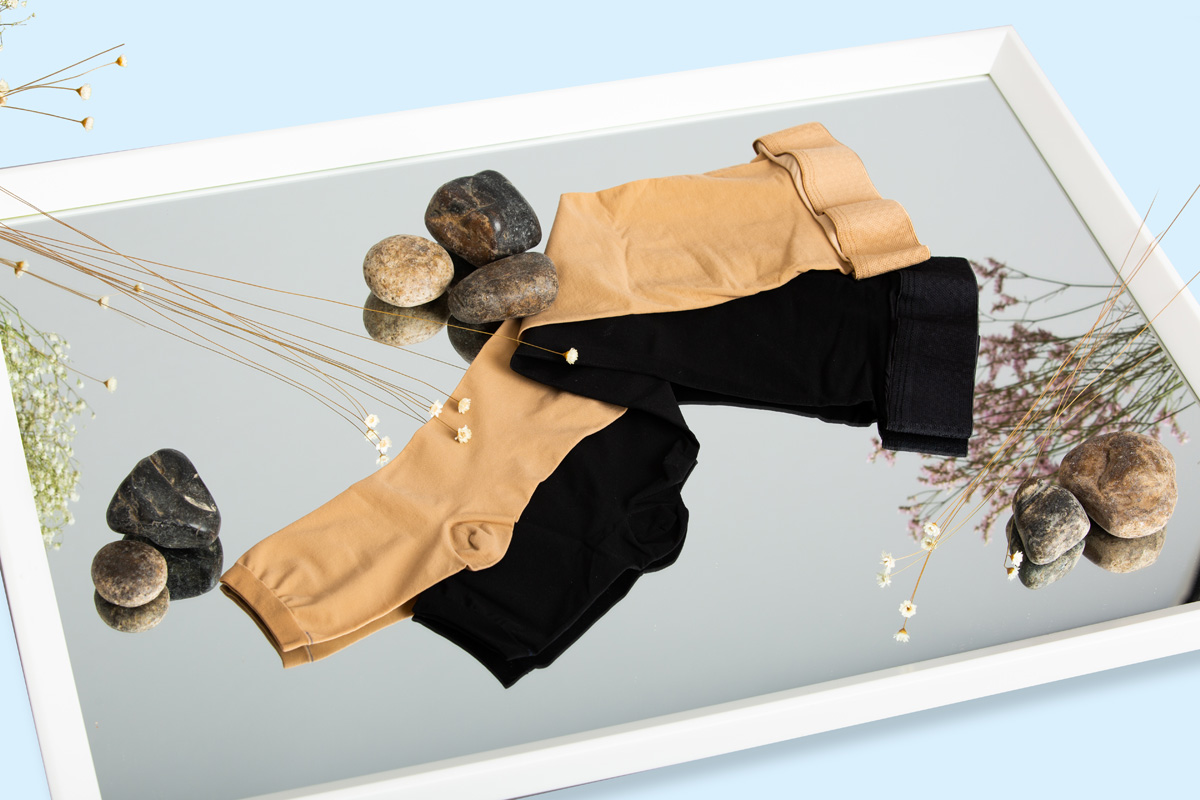
First Few Days After Treatment
Activity Level: Most patients can return to their normal activities immediately. However, avoid strenuous exercise, hot baths, saunas, or activities that involve heavy lifting for the first few days.
Pain Management: Some mild discomfort, bruising, or itching at the injection sites is normal. Over-the-counter pain relievers like acetaminophen can help if needed.
Avoid Sun Exposure: Keep the treated areas out of direct sunlight to prevent hyperpigmentation.
Weeks Following Treatment
Continue Wearing Compression Stockings: Follow your doctor's instructions on how long to wear the compression stockings. This is typically for 1-3 weeks during daytime hours.
Stay Active: Regular walking and light exercise are encouraged to promote circulation and healing.
Avoid Certain Medications: Your doctor may advise you to avoid aspirin, ibuprofen, and other blood-thinning medications for a specified period.
Moisturize: Keep the treated areas moisturized to prevent dry, itchy skin.
Long-Term Care
Follow-Up Appointments: Attend all scheduled follow-up appointments. Your doctor will assess the results and determine if additional treatments are needed.
Maintain a Healthy Lifestyle: Regular exercise, maintaining a healthy weight, and avoiding prolonged standing or sitting can help prevent new varicose veins from forming.
Sun Protection: Continue to protect the treated areas from excessive sun exposure for several months after treatment.
When to Contact Your Doctor
While complications are rare, contact your healthcare provider if you experience:
- Severe pain or swelling
- Fever or signs of infection
- Extensive redness or warmth around the treated areas
- Formation of ulcers or blisters
Summing Up Sclerotherapy
Sclerotherapy stands as a testament to modern medical advancements in vein treatment. This minimally invasive procedure offers a safe, effective solution for those struggling with varicose and spider veins.
With its quick treatment time, minimal downtime, and various techniques available, sclerotherapy can be tailored to meet individual needs and concerns, promising significant improvements in both the appearance and health of your legs.
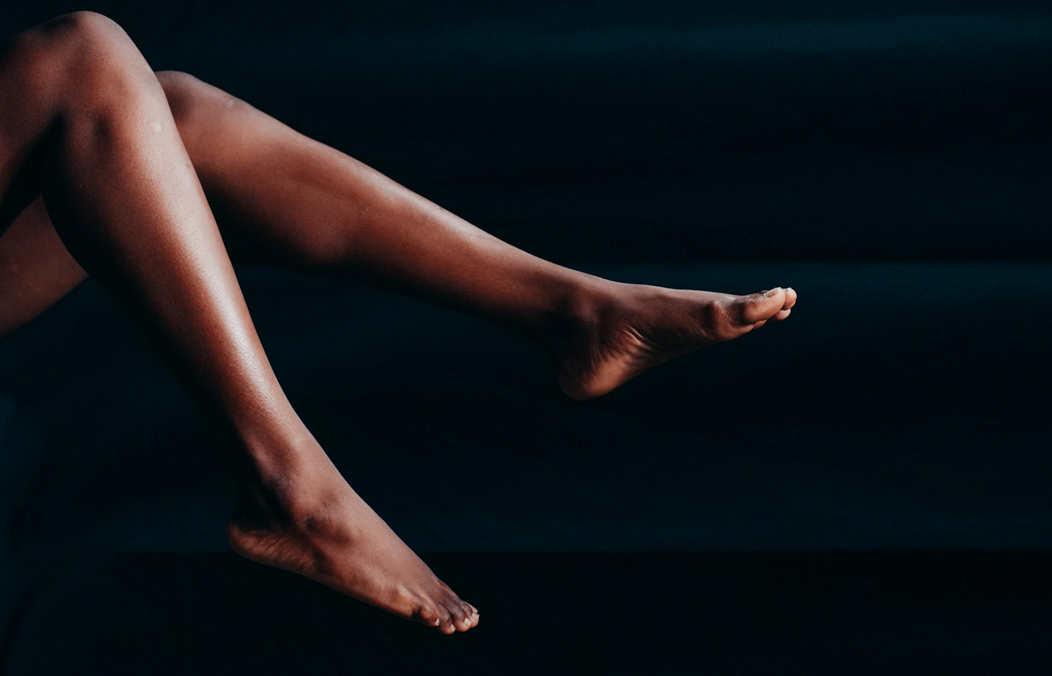
Are you wondering if sclerotherapy might be the right solution for your vein concerns?
"Sclerotherapy is a game-changer in vein treatment, offering a minimally invasive solution that effectively addresses both the cosmetic and health concerns associated with varicose and spider veins. In my experience as a vascular specialist, I've seen this procedure consistently deliver impressive results, significantly improving patients' comfort and confidence with minimal downtime." - Dr. Philip LoPresti, Chief Medical Officer
Don't let varicose or spider veins hold you back any longer! Every journey towards healthier, more confident legs begins with a single step.
We invite you to take that step today by booking a free consultation with our experienced vein specialists.
Frequently Asked Questions
Is Sclerotherapy the Best Treatment Option?
Sclerotherapy treatment generally works best for smaller spider veins, and small-to-medium varicose veins. Every client has unique needs, and while sclerotherapy works best for many, other treatment options may be more effective.
How Many Sessions of Sclerotherapy is Needed?
Typically, two to four visits can be expected to fully minimize problem veins. These visits are spaced out every few weeks for optimal healing and results.
How Long is a Typical Sclerotherapy Procedure?
A typical sclerotherapy session lasts between 15 to 30 minutes, though this can vary based on how many veins are being treated.
Is Sclerotherapy Covered by Insurance?
Sclerotherapy isn't always covered by every insurance plan. Insurance coverage depends on whether you have medical symptoms that would benefit from treatment. If treatment is only cosmetic then it would not be covered.
Is Sclerotherapy Painful?
Aside from small pinches during your procedure, most patients don't find sclerotherapy very painful. In fact, most of our clients end up watching the entire procedure to see the results in action.
What does Sclerotherapy Feel Like?
During a sclerotherapy treatment, patients will feel small pinches as the foam solution is injected into several areas of the legs with damaged veins. The needle used for injection is extremely fine and will not leave a scar.

Dr. Philip LoPresti
Meet Dr. Philip LoPresti DO, DABVLM, FACS, a board-certified vein specialist and surgeon with over 20 years of experience. Schedule an appointment with him in Queens, NY today.
Meet Dr. Philip LoPresti
Trusted insight from the nationally accredited, board-certified vein doctors at Metro Vein Centers.


